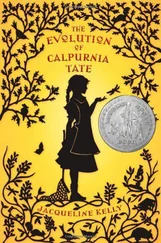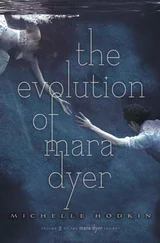
Lydia had an almost quixotic faith that she would be able to teach an ape to fully understand and to perhaps even verbally communicate in English, if only she were able to find the right pupil — someone special, some exceptionally brilliant Nietzschean überchimp such as (ahem) myself. And don’t try to feed me any of the usual nonsense about undescended larynxes and so on, about the vocal tracts of apes being anatomically unequipped for articulate speech. Put that aside, and simply listen to the sound of my voice. The mere physical equipment of vocal communication constitutes a thin layer of moss coating the rock of the issue, and that rock is the brain, the mind. My brain, my mind.
Lydia Littlemore was a pioneer of the furthermost untrammeled frontiers of science, of linguistics, of primatology, of cognitive psychology, and, indeed, of philosophy. But so, for that matter, is every mother whose child learns to speak. For she did nothing for me that a human mother would not do for her human child: she loved me. And I loved her. That was my only motivation. That was the only reward, the only conditioning I needed.
One could argue that love has no place in science. Those who make such arguments may as well argue that love has no place in human civilization, or in life.
At some point I realized there was a new woman working in the lab: Tal. I would not learn her last name — Gozani — until much later. Tal was taller than Lydia. Tal was tall for a woman. At first I think I had a little difficulty connecting the word to the person, because her name happened to be an exact homonym for an adjective describing what she was: tall. I already knew the word tall , though I don’t know if the scientists at the lab knew I knew it. As I have said, before I began to talk much I already comprehended far more spoken English than anyone imagined I did. Maybe I would have been less confused if Tal was short, or if she remained tall but was named “Short.” Anyway — she entered my life the way most people did in those days: one day, she was there. This woman I’d never seen before began to appear in the lab every day and began interacting with me, and there you have it.
In addition to being tall, I think Tal was very young when she first came to the lab. Younger than Lydia, anyway. She was (as I know in retrospect) a graduate student at the University of Chicago. I would guess Tal was in her early twenties when she started working at the lab — which would make her seven or eight years younger than Lydia when all this happened. At first I liked her well enough. I have always tended, and especially in those days, to get along with women better than I do with men, so I was glad to have another feminine presence in the lab. But there were some extraordinarily unusual aspects to Tal.
In addition to being tall, she had smooth, olive-colored, almost yellowish skin that offset her crisp gray-green eyes. She had thick, strong legs. She dressed in strange clothes. She would wear a thin sheet of bright stretchy decorative fabric wrapped around her legs for a skirt. She was constantly clicking and rattling all over with bits of rustic jewelry made of wood and rope and silver. She wore big clunky boots if the weather turned bad, and if it turned good she wore ropey brown woven sandals that crisscrossed up her calves. Often, though, she would go barefoot. She would take off her sweaty brown sandals and leave them by the door to the lab, then spend the day thumping around the floor in her bare feet. Sometimes I would inspect her sweaty brown sandals, lined up by the lab door. I would curiously lick the salt-ringed depressions that her toes had carved into their surfaces. This going barefoot was something I had never seen a human do before, at least not in a professional setting. Lydia was usually barefoot or in socks in the home, but outside her home, she always wore shoes all day. I wondered why ordinary norms of decorum were relaxed for Tal. All the other scientists’ feet were imprisoned within their shoes, generally workaday white sneakers, but Tal was allowed to romp the lab in dirty naked feet as comfortably as if this room were her own home.
She let me play with them, I remember — her bare feet. I had just met her for the first time a few days before. We sat together on my squishy blue mat, behind the glass wall that divided the lab into the human side and the chimp side, my playpen. We were sitting together, manipulating my toys. Tal sat cross-legged at first, then leaned back and stretched her legs out flat on the mat, and her bare feet emerged from beneath the stretchy red fabric of her skirt. I was transfixed by her feet. They were so ungodly dirty . They were so callused and rough. Her toenails were chipped and short, her toes armored with thick hard yellowish skin, the soles of her feet nearly black with filth. I remember thinking that they looked less like the feet of a woman than the feet of an animal, like me. I reached out with my long rubbery fingers and inquisitively tickled her toes, but I believe her feet were so accustomed to the unshod life that they had lost that especially sensitive vulnerability of the flesh that is prerequisite to effective foot-tickling. My tickling of her feet evoked from her lips a smile, yes, but no laughter. Her one nod to podiatric vanity was a thick blunt ring of tarnished silver hugging the thinnest segment of the second toe on her left foot. I touched the ring with my finger. “It never comes off,” she said. I noticed also that, unlike the smooth, glabrous legs of most of the human women I had seen, this one’s legs were coated with fine wispy fur. A thin silver chain dangled from her neck. She let me touch that, too. It had a sleek, scaly texture; it slid and slithered over my fingers like something alive, like a slender worm of light. And at the end of this chain was a piece of jewelry, an emblem of some sort. The emblem was composed of two interlocking equilateral triangles, one upside down and the other right-side up, such that the two linking triangles form a hexagon in the center, with six smaller equilateral triangles directly abutting each side of the hexagon and pointing outward from the center to form a radially symmetrical six-pointed star. For a moment I was hypnotized by the way its elements connected, how the eye could assemble, dissect and reassemble the image, the kaleidoscopic matrix of its harmonious geometry. I put it in my mouth. “Don’t put that in your mouth,” she said, and took it out. She wiped my spit off of it on her scarf and tucked it back under her shirt, where it slid down her chest and disappeared in the sloping gully of flesh between her breasts. My gaze then ascended to the very pinnacle of her, past her throat, her chin, her lips, her nose, past the conjoined twins of her furry black eyebrows that met in a delta of fuzz above the bridge of her nose and above her wide forehead, to find the most outrageous aspect of her physiognomy: her hair. It was black as India ink, and arranged not in lots of very thin threads like that of most humans, but was all clumped and scrunched up into an array of thick, muscular ropes. I touched them. I laughed at their surprising texture. They didn’t feel like anything that really ought to be sprouting out of the top of anyone’s head. They felt almost like plant life. I stroked these long knotty cables of hair, and I grabbed one of them — the girth of it fit just inside my fist — and I squeezed it, and in my hand it felt just like the vines of ivy that crawl all over the sides of the magisterial stone buildings on the campus. That’s all I had to compare it with in my then-very-small grab bag of a posteriori experience. I squeezed her hair-ropes. I loved playing with women’s hair. I still do. But this was — this was something else entirely. She laughed. Her laugh was a gleeful flutter abruptly truncated by a silly little snort.
Читать дальше













